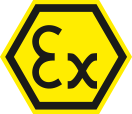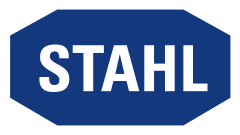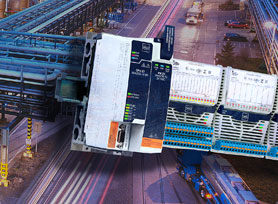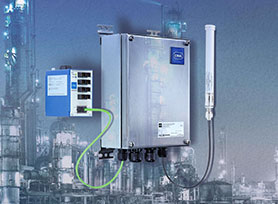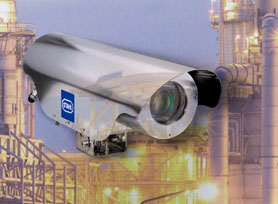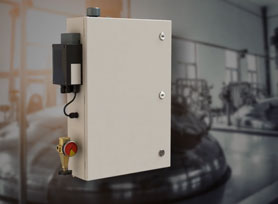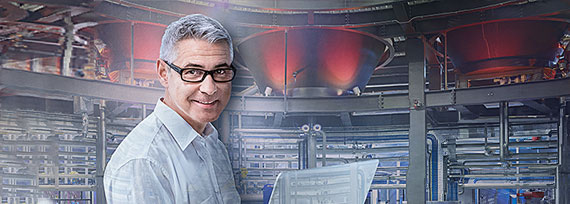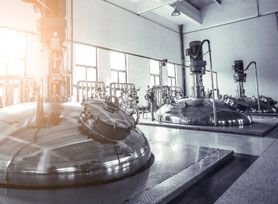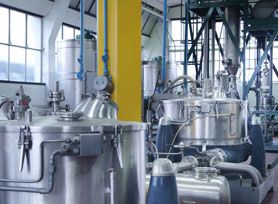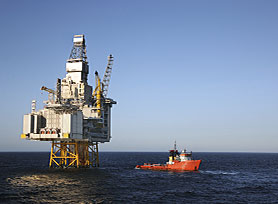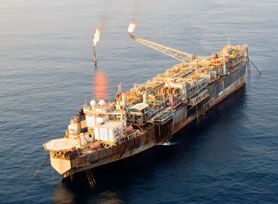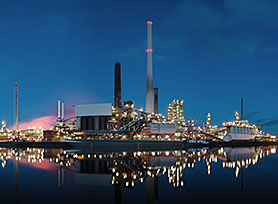#STAHL4AUTOMATION
Thanks to our globally unique expertise in explosion protection and over 50 years of experience in automation of hazardous areas, R. STAHL is one of the leading technology providers in this area today. We provide complete solutions and highly specialized components for almost every industrial area. All systems are perfectly matched to your individual needs. The mark of “Made in Germany” demonstrates the reliability of your customised Ex-area solution.
You can always play it safe with R. STAHL. This even applies to new challenges, including digitalisation in hazardous areas. No matter if it’s setting up modern Ethernet networks, integrating diagnostic data in plant asset management systems, or even wireless communication and developing visualization concepts. R. STAHL is proudly involved in working groups such as NOA (NAMUR Open Architecture), OPAF (Open Process Automation™ Forum), and Ethernet-APL (Advanced Physical Layer). This combination makes modern process automation and digital communication usable.
Our expertise and commitment know no limits. Worldwide, we offer systems certified to the latest standards. For the full range of applications and explosion protection as well as extreme temperature ranges and harsh environmental conditions. In our comprehensive brochure on the subject of automation, you will find a lot of additional information and specific application examples.
You can rely on R. STAHL.
Latest News
Variable wireless networking in hazardous areas
With installed radio technology for WiFi Networking, R. STAHL supports the digitalisation of potentially explosive areas in the process industry. Our certified solutions use a wide variety of radio standards. All of these can easily be integrated into any customers’ infrastructure.
Competence with a vision: systems for process automation
Modern, cost effective and future oriented: R. STAHL develops and manufactures complete, worldwide certified system solutions for the digitised process automation of plants.
R. STAHL designs network technology with a future
R. STAHL plays an active role. We support the process industry with the design and implementation of explosion protected Ethernet networks. All of R. STAHL’s experience is used in the formation of technically advanced yet normative design of new, future proof open standards.

Frequently Asked Questions
1. Which Signal Transmission Concepts are used in Digitalisation?
With digitising a system in hazardous areas, there are four options available. Fieldbus Technology (such as FF H1 or WirelessHART), Remote I/O solutions, Ethernet, or Wireless Solutions. All of these technologies enable a digital communication infrastructure to set up as the basis for the transmission of process and additional sensor data.
2. What are the Advantages of “Ethernet in the Field”?
Only Ethernet will enable IP communication into the field. The high data rates and data volumes that can be transmitted in networks with many participants are particularly advantageous. The additional information available as a result simplifies and improves the diagnosis of networks and field devices. Consistent hardware means that different systems can easily be integrated in plants. This includes ERP, SAP, MES but also integration of other protocols like HART, OPC UA and fieldbusses. Another advantage is the use of industry standard components and IT skills. This dramatically reduces commissioning costs, allows for remote access and thus uncomplicated remote maintenance.
3. What Challenges does “Ethernet in the Field” create?
Process Automation has special conditions and requirements for software and hardware. Specially trained IT experts are therefore essential. Additionally, standard industrial products can only be used using special solutions. This particularly applies to hazardous areas. Network with firewalls, VPNs, or certification of network participants, is also of great importance.
4. How can you use the Ethernet in Ex-Areas?
Various options exist today. Both fibre optic cables with “op is” type of protection and increased safety 'e' installations are already in use. In the future, additional options will be available. Examples include intrinsically safe Ethernet based on Ethernet-APL (2-wire) and 100BASE-TX-IS (4-wire). Together with other manufacturers, R. STAHL is working on new, globally standardised solutions.
5. What Advantages does Remote I/O offer compared to Point-to-Point Installation?
Point-to-point communication requires its own cable and I.S. isolation stage for every transmitted signal. For transmission of a limited number of signals, point-to-point communication is a good solution. Installation is simple to handle for these kinds of requirements. The advantages of Remote I/O become apparent once the signal amount increases and especially if the distances from control room to field are longer. All field devices are connected via a digital fieldbus that transmits all signals and forwards them to the control level. This means that space-consuming control and distribution cabinets in the control centre belong to the past. Integrated diagnostics in turn provide early warnings of system failures. Additionally, extensive functions facilitate on-site and remote commissioning.
6. What are the Advantages of Ignition Protection class Ex i Intrinsic Safety?
Intrinsic Safety is not just limited to individual equipment. It also refers to the entire circuit of all equipment. There are many advantages in terms of economy, safety, maintenance and operation.
More Profitability:
- No special protective enclosure concepts required (e.g. Ex d or Ex p)
- Greater flexibility when interconnecting or combining devices of different vendors, while always taking into account the correct Ex i interconnection
Higher Safety:
- Cables and wires are also protected
- Also ideal for Zone 0 applications
Easier to maintain and operate:
- Calibrations, function tests, conversion modifications, replacement processes and more are possible at any time while the system is live
7. Are there Restrictions to the use of Ignition Type Ex i Intrinsic Safety?
Yes. When compared to other types of protection, Ex i "intrinsic safety" adds additional demands to planners and installers. Intrinsic Safety depends not just on the condition of individual devices. The correct interconnection and installation of all devices in the intrinsically safe circuit is also an important requirement. This is because these circuits need to be adequately protected from external energy input. The type of protection Ex i “intrinsic safety” is suitable for circuits with a low power requirement of around 2 Watts.
8. What is the Difference between an Isolator and a Zener Barrier?
The most important difference is how galvanic isolation is used. Zener Barriers create intrinsic safety by means of fail-safe limitation of current and voltage. The voltage is limited with the help of Zener diodes. An isolator, or isolated barrier, relies on galvanic isolation between input and output. Due to their simple structure, Zener barriers are flexible and have a long service life. The safe use of Zener barriers always requires connection to a potential equalisation. Isolators, on the other hand, allow for faulty states to be dealt with without using potential equalisation. The devices also offer convenient functions such as line fault signalling or signal processing.
THE PERFECT PARTNER
Due to our experience in Ex-Protection, R. STAHL is your ideal partner for Ex-area projects. From planning, commissioning and whatever lies beyond. You can rely on our know-how and service. Have a look at the process below.




Your ideas and requirements

Joint conceptual design of draft engineering

Production and assembly by expert staff



Handling of all dispatch details - all over the world

In-house or on-site training sessions for your staff



We ensure your facility runs at its best

Explosion protection concepts, consolidated and selected


Detailed engineering of your solution

Receive a factory acceptance test at our premises

Support during commissioning on-site



